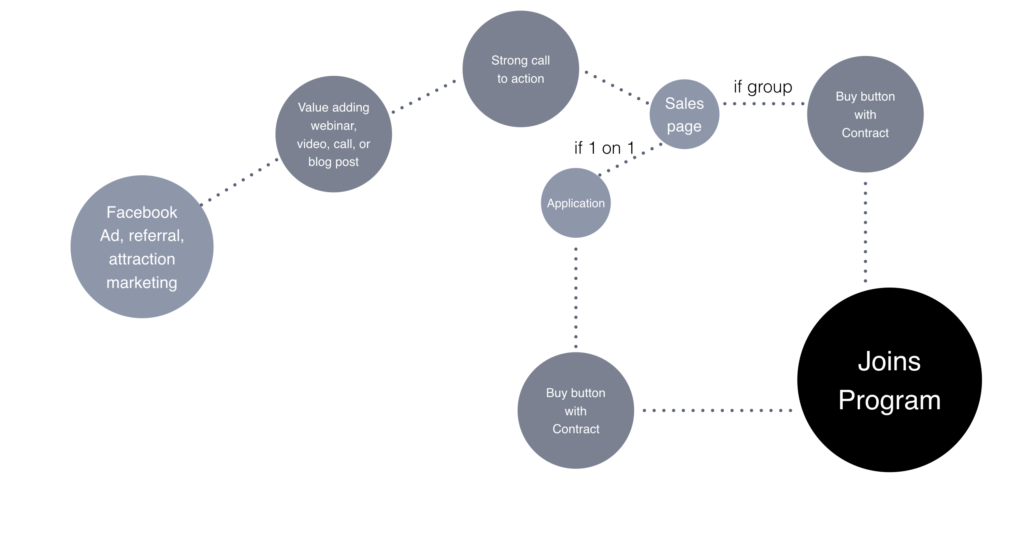This post is all about auto webinar funnel.

As a business owner, you’re always looking for ways to generate leads and increase sales and if you are tired of networking events and endless boxes of business cards, this is for you.
One of the most effective methods is through a webinar funnel, which allows you to showcase your expertise, provide value to your audience, and establish a relationship with potential customers.
However, hosting live webinars can be time-consuming and may not fit into your schedule. That’s where an automated webinar funnel comes in.
In this post, we’ll show you how to create an automated webinar funnel that generates leads and sales while you sleep.
How to Create an Automated Webinar Funnel That Generates Leads While You Sleep
Step 1: Choose a Relevant Topic
Choosing the right topic for your automated webinar is critical to the success of your funnel. Without a compelling topic, you’ll struggle to capture the attention of your target audience and generate leads.
To choose a topic that resonates with your audience, start by conducting market research. Use tools like surveys, social media polls, and customer feedback to get a sense of what your audience is interested in and what their pain points are.
Learn more about webinar funnels here.
Once you have a good understanding of your audience’s needs and interests, you can begin to brainstorm webinar topics that address these areas. Your webinar topic should be specific, actionable, and provide real value to your audience.
Consider the different angles that you can take on your chosen topic and think about how you can make it unique and compelling. Use your expertise to provide insights that attendees can’t find elsewhere and provide real-world examples that they can relate to.
Finally, make sure that your webinar topic aligns with your overall business goals. Your webinar should be designed to attract and nurture leads, so make sure that your topic is relevant to the products or services that you offer.
By choosing a relevant and compelling webinar topic, you’ll be well on your way to creating an automated webinar funnel that generates leads while you sleep.
Step 2: Record Your Webinar
Recording your webinar is crucial to creating an automated webinar funnel. It allows you to create an evergreen asset that can be used to generate leads and sales while you focus on other aspects of your business.
When recording your webinar, make sure to test your equipment beforehand and create a quiet and distraction-free environment to minimize background noise.
Additionally, ensure that your presentation is clear and easy to follow. Use visual aids like slides, graphics, and videos to help illustrate your points and keep attendees engaged throughout the presentation.
Keep in mind that the length of your webinar can affect its success as an automated webinar. It’s important to strike a balance between providing enough information to be valuable to attendees and keeping the webinar short enough to hold their attention.
Generally, webinars that are between 30 minutes to an hour in length tend to perform well.

Once your webinar is recorded, edit it to ensure that it flows smoothly and includes all the relevant information.
You can also add a personalized introduction and conclusion to make the automated webinar feel more personal and engaging.
It’s also important to ensure that your automated webinar is hosted on a reliable platform that can handle the traffic and provide a seamless experience for attendees.
There are several platforms available that specialize in hosting automated webinars, such as EverWebinar.
Overall, recording and editing your webinar is a critical step in creating an automated webinar funnel that generates leads and sales while you sleep.
Ensure that your presentation is engaging and informative and that your automated webinar is hosted on a reliable platform to maximize its impact on your business.
Step 3: Set Up Your Automated Webinar Funnel
In addition to creating a landing page and email sequence, it’s important to set up the actual automation of your webinar funnel.
This can be done using a variety of software tools, including EverWebinar or WebinarJam.
First, you’ll need to upload your recorded webinar to the software and set a schedule for when the webinar will be played.
You can choose to have the webinar play on a specific date and time, or set it up to play on-demand so that registrants can watch at their convenience.
Once you have your webinar scheduled, you’ll need to set up the registration process.
This can be done through the landing page you created earlier or directly through the webinar software. Make sure that the registration process is streamlined and easy for attendees to complete.
During the webinar, it’s important to include interactive elements that keep attendees engaged and interested. This could include polls, quizzes, or a live chat feature.
These elements help to create a sense of community and make the webinar feel more like a live event.
Finally, make sure to follow up with attendees after the webinar.
This can be done using the email sequence you set up earlier, and should include additional resources and information related to the webinar topic.
Make sure to include a clear call to action that encourages attendees to take the next step with your business.
Step 4: Automate Your Funnel

Once you’ve set up your landing page and email sequence, it’s time to automate your funnel.
Use a webinar hosting platform like EverWebinar or WebinarNinja to host your automated webinar.
These platforms allow you to schedule your webinar to run at specific times and dates, and can automatically send reminders and follow-up emails to attendees.
Learn more about how to create a sales funnel that generates leads and sales daily.
Step 5: Analyze Your Results
Analyzing the performance of your automated webinar funnel is crucial to identify the areas of improvement and optimize it for better results.

Here are some important metrics to track and analyze:
- Registration rate: This metric measures the percentage of visitors who sign up for your automated webinar after landing on your registration page. A low registration rate indicates that your landing page may need to be optimized to increase conversions.
- Attendance rate: This metric measures the percentage of registrants who actually attend your webinar. A low attendance rate may indicate that your email reminders or webinar timing need to be adjusted.
- Engagement rate: This metric measures how engaged attendees are during the webinar, such as how many questions they ask or how long they stay on the webinar. A low engagement rate may indicate that your content needs to be more engaging or your audience needs to be better targeted.
- Conversion rate: This metric measures the percentage of attendees who take the desired action, such as purchasing a product or signing up for a consultation. A low conversion rate may indicate that your call to action needs to be more compelling or your audience needs to be better targeted.
By tracking these metrics and analyzing the results, you can identify any weaknesses in your automated webinar funnel and make the necessary adjustments to improve its effectiveness.
Learn more about evergreen webinars here now.
This will ultimately help you generate more leads and sales while you sleep.
Conclusion:
An automated webinar funnel is a powerful tool that can generate leads and sales for your business while you sleep.
By following these steps, you can create an automated webinar funnel that provides value to your audience and helps you achieve your business goals.
Remember to choose a relevant topic, record a high-quality webinar, set up your funnel, automate the process, and analyze your results to ensure its success.
This post was all about auto webinar funnel.






